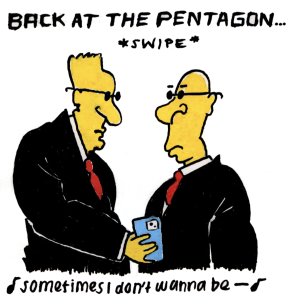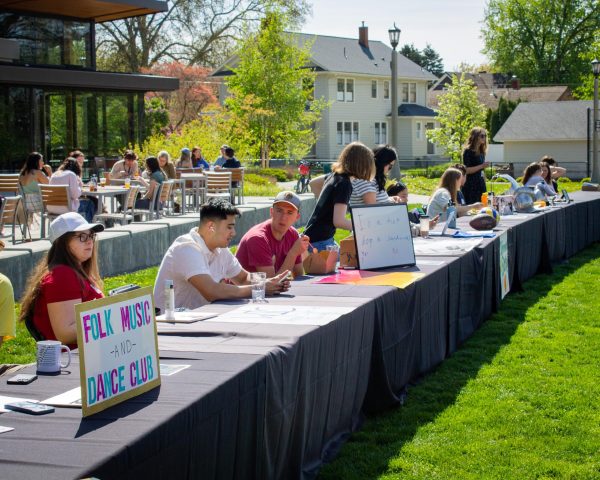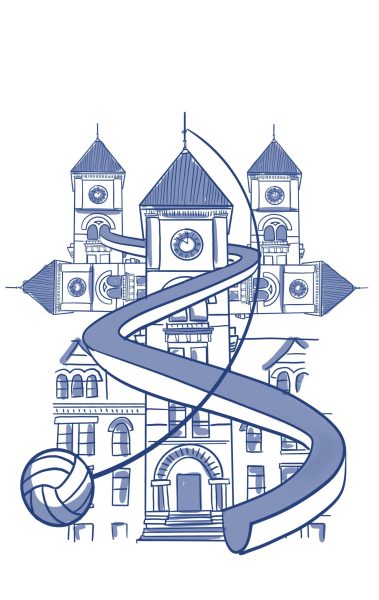When the Levee Runs Dry: A Savage Journey from ’71 to ’17
May 12, 2017
“Strange memories on this nervous night in Las Vegas. Five years later? Six? It seems like a lifetime, or at least a Main Era – the kind of peak that never comes again. San Francisco in the middle sixties was a very special time and place to be a part of. Maybe it meant something. Maybe not, in the long run… but no explanation, no mix of words or music or memories can touch that sense of knowing that you were here and alive in that corner of time and the world. Whatever it meant…”
(An excerpt from Hunter S. Thompson’s Fear and Loathing in Las Vegas: A Savage Journey to the Heart of the American Dream)
Highway 101 winds south from San Francisco through Gilroy and Salinas before turning westward towards San Luis Obispo and Pismo Beach. We shot down that highway at a modest 5-7 miles per hour over posted speed limits; adventurous not reckless. At around Santa Barbara we finally hit traffic, burning hand rolled cigarettes out the window with This American Life on the radio.
We spent three nights in a renovated warehouse in the Arts District of East Los Angeles. Rubbing shoulders with film industry types, trying to get a sense for how they lived. There is a crackling energy in the air along Silver Lake Boulevard. Los Angeles is a means to an end; people come here to Make It.
I am on assignment for The Wire, recreating certain aspects of Hunter Thompson’s cult classic, Fear and Loathing in Las Vegas: A Savage Journey to the Heart of the American Dream. My hope is that somewhere between Los Angeles and Las Vegas, clarity will strike.
Los Angeles is a city with a hustle. It feels like the people living along the banks of the East River reside in a bingo cage. They rattle around waiting to be picked; frantically preparing for their chance, praying it comes before they are too jaded to enjoy it. In Los Angeles the wealthy live in the Hills, visible from all over the city. Money talks. The rich, float.
Fear and Loathing was written over the course of two trips Thompson made to Las Vegas during the Spring of 1971. The narrative spans just a few days, a multi-month long drug binge condensed into a handful of late nights and early mornings, doused in a cold and sticky sweat.
We spent Friday evening huffing up the side of a hill. From the viewpoint at the Griffith Observatory, only the skyscrapers of Downtown Los Angeles are visible some nights. Their black stalks grow out of a thick layer of smog that conceals the rest of the city. If you look to the right, you can see Hollywood Boulevard.
Our first stop off Highway 15 is Zzyzx on the outskirt of the Mojave National Preserve. As we drive up we see what appears to be a lake, but turns out to be a vast field of salt. Another 50 miles down the highway we get hungry and make a stop at Peggy Sue’s ‘50s Diner.
Fear and Loathing is located somewhere in the muddled history of the dissolution of the so-called liberal consensus. A drug-addled tribute to the cynicism of the Nixon era, “the American Dream. Horatio Alger gone mad on drugs in Las Vegas. Do it now: pure Gonzo journalism,” as Thompson described it.
Thompson was, if nothing else, a devoted student of the American psyche. His work was so essentially true. Ditching journalistic standards of objectivity or even fact, Thompson’s work was characterized by swaggering bravado and a deeply self-conscious skepticism. “Fear and Loathing” is a gut feeling more than any particular argument, or even story. Thompson appears at the center of a historical moment, behind the wheel of the fastest car in the world, an approaching cliff on the horizon.
For many Americans these simultaneous feelings of impending doom and brash patriotism were symptomatic of the time. David F. Schmitz, Robert Allen Skotheim Chair of History at Whitman College, places Thompson somewhere on the spectrum of voices that emerged during the American identity crisis of the late 1960s and early 1970s. As an author and a citizen, Thompson caught this wave as it begins to break.
“The liberal consensus was built on the idea that not only would economic prosperity create abundance, but that abundance would solve social problems. Progress without conflict. Out of that emerged the Cold War culture of conformity. If you conformed to the dominant expectations of society–if you played your role, worked hard and did what you were told–you could advance. That attitude won us World War II, and if we continued with it we could continue that success,” Schmitz said.
This is the backdrop which supports Thompson. The culmination and climax of John Winthrop’s’ City on a Hill. The G.I. Bill, New Deal institutions, Growth Economics. Americans moved into the suburbs and bought American made cars and houses–things were alright. Though Thompson never lived in a Levittown, he was acutely aware of this sentiment.
Writing of San Francisco in the middle ‘60s, Thompson described “a fantastic universal sense that whatever we were doing was right, that we were winning.” He continued, “That, I think, was the handle–that sense of inevitable victory over the forces of Old and Evil. Not in any mean or military sense; we didn’t need that. Our energy would simply prevail. There was no point in fighting–on our side or theirs. We had all the momentum; we were riding the crest of a high and beautiful wave.”
In 1964, Lyndon Baines Johnson was reelected in a landslide, the Civil Rights Act was passed, Americans believed in themselves. They believed that not only were they doing well by and for themselves, but also by and for the rest of the world.
But by 1971, something had snapped.
For Schmitz, the change could be traced to South East Asia. “The war changed everything. The war seemed to have poisoned the air. As Martin Luther King Junior characterized it, it became a demonic sucking cup, consuming resources,” Schmitz said.
Towards the end of the 1960s, for many Americans it seemed as though gaps were emerging in the national fabric. Between the morals and institutions that were supposed to define this American idea, and the realities that they saw in Dallas, Mississippi, and My Lai. “Where do you go when you start to question that truth?” Schmitz said.
Thompson made his home in this dissolution, this disillusionment. He seemed to find comfort on the precipice, thriving within an incomprehensible iteration of the anti-war movement. Electric Kool-Aid Acid Test, Jefferson Airplane, Grapefruit juice.
He finds himself screaming through the desert in a bright apple-red convertible with a foreign and furious attorney scarfing down blotter acid and mescaline, searching for something that he has lost without realizing it. The American Dream, the middle ‘60s, San Francisco, at times it seems like even Thompson doesn’t know what he is looking for. The harder he searches, the more frustrated he becomes, the tighter he squeezes, the quicker it slips through the cracks in his fingers. The book is deeply uncomfortable; unfulfilling, scary. He wrote:
“KILL THE BODY AND THE HEAD WILL DIE.
This line appears in my notebook, for some reason. Perhaps some connection with Joe Frazier. Is he still alive? Still able to talk? I watched that fight in Seattle–horribly twisted about four seats down the aisle from the Governor. A very painful experience in every way, a proper end to the sixties: Tim Leary a prisoner of Eldridge Cleaver in Algeria, Bob Dylan clipping coupons in Greenwich Village, both Kennedy’s murdered by mutants, Owsley folding napkins on Terminal Island and finally Cassius/Ali belted off his pedestal by a human hamburger, a man on the verge of death. Joe Frazier, like Nixon, had finally prevailed for reasons that people like me refused to understand–at least not out loud.”
For Schmitz the value in this study lies in the way that it helps us understand the contemporary moment. Thompson’s hallucinogenic romp through the Nevada desert, Nixon’s divisive victory in ‘68, Joe Frazier stooping over a bloodied Mohammed Ali.
“The politics of polarization, the deliberate efforts to exploit that polarization and that fragmentation. To find the genesis of this, you need not look past Nixon. People feeling as though they were being left behind, left out. People feeling that America had once worked for them, but at some point stopped. This wasn’t a structural critique, but rather a social one. Too much permissiveness, too much drug use, civil rights, these things challenged their traditional values. It is striking how these themes that emerged in the late 1960s and early 1970s are still shaping so much of what we are going through as a nation today.”
A number of hours or days after our stop in Zzyzx, I found myself walking down the Las Vegas strip late one Sunday night, searching for something, though it is still unclear to me what it was. We lost $10 on the slots, got turned down at a blackjack table with a $50 buy in, spent $5 on a bottle of water. We both woke up the next morning and knew we had to leave. Vegas had been too much for us, or maybe us for it, either way our welcome had worn.
We spent the next few days in Death Valley, tromping through sand dunes and cooking on a dual-burner propane stove. The days blurred into nights and the nights into mornings. We ended the trip with a 24 hour shot back to the Pacific Northwest, stopping to sleep for two hours in the car. Monster Energy and gas station coffee, Ira Glass and James Taylor.
———————————————————————————————————
“There was a fantastic universal sense that whatever we were doing was right, that we were winning… And that, I think, was the handle – that sense of inevitable victory over the forces of Old and Evil. Not in any mean or military sense; we didn’t need that. Our energy would simply prevail. There was no point in fighting – on our side or theirs. We had all the momentum; we were riding the crest of a high and beautiful wave… So now, less than five years later, you can go up on a steep hill in Las Vegas and look West, and with the right kind of eyes you can almost see the high-water mark – that place where the wave finally broke and rolled back.”
Thompson died on February 20th of 2005 in his “fortified compound” in Woody Creek, Colorado. After his death, Rolling Stone published what is thought to have been a suicide note.
“No More Games. No More Bombs. No More Walking. No More Fun. No More Swimming. 67. That is 17 years past 50. 17 more than I needed or wanted. Boring. I am always bitchy. No Fun—for anybody. 67. You are getting Greedy. Act your (old) age. Relax—this won’t hurt.”








